Teething Discomfort: Top 10 Remedies
19 hours of research 3 minute read

Teething, a significant developmental milestone in a baby's life, can be a challenging journey for both the little one and the parents. It typically begins when a baby is around six months old, although it can start earlier or later, and continues until most primary teeth have erupted. The process involves the emerging teeth breaking through the gums, which can cause discomfort, irritability, and disrupted sleep patterns. These top 10 teething remedies can help ease your baby's discomfort and provide some much-needed relief for both you and your child.
Understanding Teething
Teething occurs as your baby's first set of teeth, known as primary teeth or baby teeth, start to push their way through the gums. This process is entirely natural and is part of a child's developmental journey. Each baby is unique, and the teething experience can vary greatly from one child to another.
While the specific timeline and order in which teeth erupt can differ, the general pattern typically follows this sequence:
- Lower Central Incisors: The two bottom front teeth are usually the first to appear, usually around 6-10 months of age.
- Upper Central Incisors: The top front teeth follow shortly after.
- Lateral Incisors: These are the next to emerge, both on the top and bottom.
- First Molars: The first molars come in, typically around 13-19 months.
- Canines (Cuspids): These pointed teeth follow.
- Second Molars: Finally, the second molars complete the primary set, usually between 23-33 months.
Teething can be an uncomfortable process for your baby, as the pressure from the emerging teeth causes the surrounding gum tissue to become sore and inflamed. While teething is usually a natural and harmless process, there are times when it's essential to seek guidance from a pediatrician. In this brief guide, we'll explore when to seek a pediatrician's assistance for teething-related concerns to ensure your child's well-being.
When Teething Is Normal?
First, it's important to understand that teething, in and of itself, is a normal part of a baby's development. The discomfort and common symptoms associated with teething are expected, and they typically include:
- Irritability: Babies may become fussier than usual.
- Excessive Drooling: An increase in drooling is common.
- Chewing and Biting: Babies often chew on objects to relieve gum discomfort.
- Disrupted Sleep: Teething can lead to changes in sleep patterns.
- Decreased Appetite: Sore gums may make eating uncomfortable, resulting in a temporary decrease in appetite.
In most cases, these symptoms are manageable with simple home remedies and do not require a visit to the pediatrician.
When to Consult a Pediatrician?

While teething is generally a straightforward process, there are instances when you should seek guidance from a pediatrician:
- High Fever: Teething should not cause a high fever (above 100.4°F or 38°C). If your baby develops a fever, it may be due to an underlying illness or infection that requires medical attention.
- Excessive Diarrhea or Vomiting: Teething does not typically lead to severe gastrointestinal symptoms. If your baby experiences persistent or severe diarrhea or vomiting, consult a pediatrician.
- Unusual Rash: While some drooling and facial rashes are common during teething, an unusual or persistent rash may signal an unrelated issue.
- Severe Pain and Discomfort: If your baby seems to be in severe pain, crying inconsolably, or experiencing extreme discomfort that isn't alleviated by standard teething remedies, it's important to consult a pediatrician to rule out other causes of distress.
- Teething baby won't eat from bottle: If your baby's refusal to eat or drink persists and is causing dehydration or weight loss, medical attention is crucial.
- Hoarse Voice During Teething: Baby hoarse voice teething can be linked to the increased production of saliva and drooling. Excessive drooling may lead to a temporary alteration in vocal quality, causing a hoarse or raspy sound.
- Prolonged Symptoms: If teething symptoms persist for an extended period without improvement or if they worsen over time, consult a pediatrician to ensure there are no underlying health issues.
- Unusual Behavior: If your baby displays behavior that is out of character or concerning, such as lethargy or extreme fussiness, it's best to consult with a healthcare professional.
- Developmental Concerns: If you have concerns about your child's development, oral health, or the timing of teething milestones, your pediatrician can provide guidance and reassurance.
Now that we understand why teething happens and what signs to look for, let's explore the top 10 teething remedies to help alleviate your baby's discomfort.

1. Baby Teething Toys
Teething toys are a classic choice for soothing teething discomfort. These items come in various shapes and textures, designed to provide comfort to your baby's sore gums. When selecting teething toys, ensure they are BPA-free and easy to clean to guarantee safety.
2. Baby Teething Ring
Chilling a teething ring baby or a damp washcloth (not frozen) can provide additional relief to sore gums. The cold temperature reduces inflammation and temporarily numbs the pain. Always ensure the item is clean and not too cold to prevent any harm to your baby's sensitive gums.
3. Baby Teething Gel
Over-the-counter teething gels such as orajel can provide relief by numbing the gums with a mild anesthetic. However, it's essential to use them sparingly and consult your healthcare provider before using them excessively, as misuse can lead to potential side effects.
4. Baby Teething Food
Cold and soft foods can offer comfort to teething babies. Try giving them chilled applesauce, yogurt, or pureed fruits in a mesh feeder. The cold temperature and gentle pressure can help soothe sore gums. Baby teething crackers is also a popular for its benefit. Always be cautious about choking hazards and select age-appropriate foods.
5. Homeopathic Teething Tablets
Homeopathic teething tablets, often containing natural ingredients like chamomile and arnica, can have calming and anti-inflammatory effects. Consult your pediatrician before using them to ensure they're safe for your baby.
6. Gum Massage
A gentle gum massage using a clean finger can provide relief to your baby's discomfort. Wash your hands thoroughly and then apply gentle pressure to the baby's gums. This can help alleviate the pain and provide a comforting touch for your baby.
7. Pacifiers
A pacifier can offer comfort and distraction during teething. Choose orthodontic or silicone pacifiers to ensure they are safe for your baby's developing teeth and gums. Be cautious not to overuse pacifiers, as this can lead to dental issues in the long run.
8. Over-the-Counter Pain Relievers
In some cases, pediatricians may recommend over-the-counter pain relievers like acetaminophen or ibuprofen. These can help reduce pain and inflammation associated with teething. Always use them in the correct dosage and only as advised by your healthcare provider.
9. Amber Teething Necklaces
Amber teething necklaces have gained popularity as a natural teething remedy. It is believed that when the amber warms against the skin, it releases a substance called succinic acid, which can have pain-relieving properties. However, the safety and effectiveness of these necklaces are a subject of debate, and caution is advised when using them.
10. Baby shaking head side to side
Baby shaking head side to side teething, sometimes serves as a self-soothing mechanism. The rhythmic movement may help alleviate gum discomfort by providing a distracting sensation.
Popular European Baby Formulas
As parents, we're always seeking the best for our little ones, especially during significant milestones like teething. Alongside effective remedies, providing nutritious and gentle sustenance becomes paramount. Here, we introduce three exceptional infant formulas that not only prioritize your baby's nutrition but also cater to their delicate needs during teething discomfort. They're more than just nourishing alternatives; they're companions on this beautiful yet challenging journey of parenthood.
✓ 100% Organic Formula
✓ Contains Prebiotics, DHA, and ALA
✓ HiPP's most popular goat milk formula
Check PricePopular With Parents Because: HiPP Dutch Goat Organic Infant Formula is specially formulated for babies with sensitivities to cow's milk. Derived from high-quality Dutch goat milk, it's naturally rich in vitamins, minerals, and protein, crucial for bone and muscle development during the teething phase. Its gentle composition helps alleviate digestive issues often exacerbated by teething, providing comfort and nourishment. With its creamy consistency and mild taste, it's a soothing option for your baby's teething journey.
✓ Clean formula ingredients
✓ Demeter Biodynamic Certified
✓ Holle's most popular cow formula
Check PricePopular With Parents Because: Holle Bio Organic Infant Formula is synonymous with premium quality and wholesome ingredients. Sourced from biodynamic farms in Europe, it offers a gentle and nourishing option for infants experiencing teething discomfort. Enriched with essential nutrients and natural goodness, it supports healthy development while being easy to digest. Its smooth texture and mild flavor make it a comforting choice for your little one during teething.
✓ 100% Vegetarian formula
✓ Made from full cream cow's milk
✓ Kendamil's most popular go-to infant cow's milk formula
Check PricePopular With Parents Because: Made with full-cream British milk, Kendamil Classic provides a balanced nutritional profile essential for supporting your baby's growth during teething. 100% vegetarian friendly, it's free from palm oil and GMOs, offering peace of mind for parents seeking natural alternatives. Its creamy texture and gentle taste make it a comforting choice for your baby during teething discomfort.
Best Sleeping Position for Teething baby
When faced with the challenge of a teething baby, parents often seek the most comforting sleep position to alleviate their child's discomfort. While various options may seem tempting, adhering to the best sleeping practices is essential for the safety and well-being of the infant.
1. Back Sleep Position:
-
The recommended back sleep position remains crucial, even during teething episodes, to mitigate the risks of Sudden Infant Death Syndrome (SIDS) and suffocation.
-
Parents are advised to persist with back sleeping, despite the temptation to try alternative positions when their child is in pain.
2. Transition to Side Sleeping:
-
As babies grow and become more robust, side sleeping becomes a safer option.
-
Gradual transition to side sleeping is recommended as infants develop the ability to flip themselves into different positions.
3. Hugging to Sleep:
-
While hugging a teething baby to sleep might provide temporary comfort, it's essential to limit such practices.
-
After 3-4 months, fostering a structured nighttime routine encourages the development of independent sleep skills, contributing to the child's future well-being.
Tips for Encouraging Back Sleep:
-
For babies resistant to back sleeping, parents can employ strategies to encourage compliance.
-
Avoiding softer mattresses and swaddling until the baby can roll over can promote comfort and facilitate back sleeping.
How to Help a Teething Baby to Sleep
Navigating the challenges of a teething baby's disrupted sleep can be demanding for parents. To minimize nightly disruptions during periods of teething discomfort, the following evidence-based tips provide practical solutions.
1. Pre-Feeding Massage:
-
Teething discomfort may hinder your baby's ability to feed, leading to hunger-related night wakings.
-
Before bedtime feeding, allocate extra time for a pre-feeding massage. Gently apply pressure to swollen gums using a clean finger dipped in cool water.
-
Referencing expert advice encourages this method to reduce pain before eating, promoting fuller feedings and decreasing the likelihood of early waking due to hunger.
2. Soothers Preparation and Medicinal Consideration:
-
Anticipate additional night wakings by preparing soothing items in advance.
-
Freeze wet washcloths and keep teething toys nearby to provide comfort during the night.
-
Consider offering a pain reliever if your baby is visibly uncomfortable before bedtime, always consulting with a medical provider beforehand.
3. Adjust Bedtime Earlier for Short Naps:
-
Teething discomfort may disrupt your baby's daytime routine, leading to shortened or skipped naps.
-
Combat potential overtiredness by starting bedtime routine 15-30 minutes earlier on rough nap days.
-
Counterintuitive as it may seem, preventing overtiredness is crucial for facilitating better sleep at night.
4. Balancing Comfort and Routine:
-
Teething babies may exhibit increased fussiness and clinginess, especially at sleep times.
-
Provide additional comfort through extra snuggles while maintaining consistency in your regular bedtime routine.
-
Striking a balance between offering comfort and adhering to routine helps avoid the development of new sleep onset associations that could persist beyond the teething phase.
Can Teething Cause Ear Infections?
Teething, characterized by the eruption of baby teeth, does not directly initiate ear infections. However, the excessive drooling that often accompanies teething can contribute to moisture accumulation in the ear canal. This moisture, when coupled with the warmth of the ear, creates an environment conducive to bacterial growth. Thus, while not a direct cause, teething may indirectly influence the likelihood of ear infections in babies.
Baby Ear Infection vs Teething
To discern whether a baby is experiencing teething-related discomfort or potentially facing an ear infection, it's crucial to observe distinctive signs.
Signs of Teething:
- Increased drooling
- Chewing on fingers or toys more than usual
- Swelling or redness around the gumline
Signs of Ear Infection:
- Pulling or rubbing at the ear(s)
- Difficulty sleeping or irritability when lying down
- Drainage from the ear(s)
Seeking Medical Advice:
If a baby displays signs of intense teething discomfort or exhibits symptoms that overlap with those of an ear infection, parents should remain vigilant. Consulting with a pediatrician is advisable to rule out or address any potential health concerns promptly. It is always better to seek professional guidance when in doubt about the well-being of your child.
While teething does not directly lead to ear infections, understanding the indirect link between excessive drooling and potential bacterial growth in the ear canal is crucial for parents. By recognizing the distinctive signs of teething versus ear infections, parents can navigate this phase with a better understanding of their baby's needs and promptly seek medical advice when necessary.
Teething Discomfort In Babies
Teething is a significant milestone in a baby's development, but it can also be a challenging time for both the little one and parents. As those tiny teeth begin to push through the gums, discomfort and irritability often follow.
Most teething symptoms are manageable at home with the use of safe and simple remedies. However, if you encounter any of the concerning signs mentioned above, do not hesitate to consult your pediatrician. Their expertise and guidance will ensure that your child receives the necessary care and that any underlying health issues are promptly addressed, allowing your baby to navigate the teething phase more comfortably and safely.
With patience, love, and the right remedies, you can make this period more bearable for your baby and look forward to the arrival of a beautiful, healthy smile.
Most Popular Formula For Teething Babies
Organic Life Start is committed to providing accurate, reliable, and trustworthy information to parents and caregivers. We carefully choose credible sources and follow a meticulous fact-checking process to uphold the highest standards in infant nutrition and parenting advice. To learn more about our dedication to accuracy, please explore our editorial guidelines.
Link To Sources


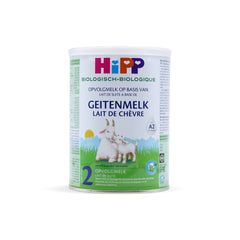
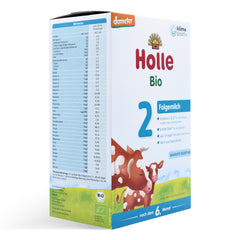
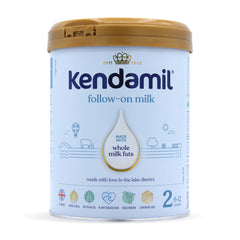
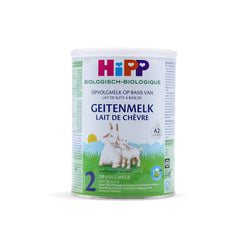
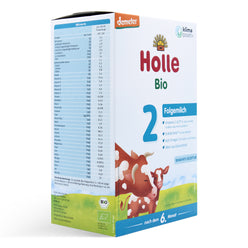
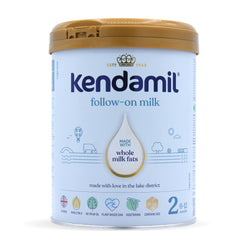






Grace Hildebrand -
I tried using chilled teething rings like this, but my baby didn’t like the cold and preferred gently massaging her gums instead. It worked much better for her and soothed her discomfort quickly.
Blaine Grice -
November 27, 2025
Teething is such a rough stage for both baby and parents. We had the most luck rotating cold teething toys, a clean chilled washcloth to chew on, and short, gentle gum massages, especially before naps. When nights got tough, distractions like sensory play or a lukewarm bath helped more than forcing “remedies” endlessly. Also learned that consistency beats doing all 10 at once—matching the fix to your baby’s mood is half the battle.
Ledger Janssen -
October 30, 2025
Teething has been so tough for our little one, but these remedies really help soothe her gums. Just knowing what’s safe to try at home makes this phase a bit easier for both of us.